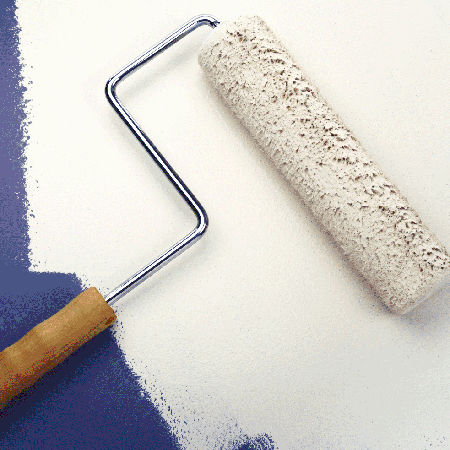To use a roller, you must transfer paint from the can into something the roller will lit into. Special roller trays are available which have a raised back and a ridged surface sloping upwards. The paint should be poured into the base of the tray so that it comes about one third of the way up the sloped surface. Load the roller by dipping it into the paint and then pulling it backwards towards you up the slope of the tray. Push the roller up and down the slope until the paint is evenly distributed throughout the pile -this is particularly important. Do not try to hold too much paint in the roller – it will drip when you lift it from the tray.
Start painting by rolling out a large W (or similar shape). Then make a series of criss-cross diagonal lines within the W to spread the paint out evenly. Finally finish off with a series of parallel rolls. Make another W alongside the first and carry on as before making sure that each block of paint overlaps the previous one. The edges of each block should be thinly coated to avoid excess paint on the overlaps. Never spin the roller when painting it causes splashing. Take a look at this website to see how professional painting services can benefit the maintenance of your property.

You must use the roller quite quickly with emulsion paint so that you can spread the paint before it dries. But, with gloss and other oil-based paints, you should use the roller much more gently (though just as thoroughly) to reduce the likelihood of making air bubbles in the paint. Preserving a wet-edge is unlikely to be much of a problem with most paints – paint can be applied so quickly with a roller. And even when edges do dry out – with matt emulsion paint the effect is not likely to be noticed.
One of the snags about using a roller is that you are unlikely to be able to paint any area completely by using the roller alone – rollers are difficult to use near corners, in awkward places, near differently coloured paintwork, around light switches and so on. So you will have to use a small brush or pad to coat these areas before starting the main area.